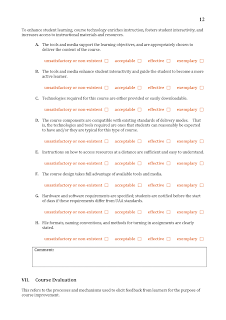INSTRUCTOR: Julien Sanghyo Park
E-MAIL: juliensanghyopark@gmail.com
YEAR/QUARTER: 2011/summer
STUDENT PROFILE: 9th grader ~ college/adult learners planning to take IELTS/TOEFL and achieve 6.5 on IELTS or 90 on TOEFL or higher within a year.
PROFICIENCY LEVEL: Mid ~ Upper Intermediate (EFL)
COURSE LENGTH: 12 weeks
TIME TABLE: (90minutes * 2)/week * 12
+one 60min. assessment session per 2 weeks
+one 60min. assessment session per 2 weeks
COURSE MATERIALS & REFERENCES:
l Required textbook: Essential Reading 4 (Macmillan)
l All materials used in the course will be provided in the form of a handout.
(extracted from Teacher’s File, etc.)
l Recommended Reading: Speckled Band and Other Stories by Sir Arthur Conan Doyle and other Intermediate ~ Upper Intermediate Leveled Macmillan Readers, Oxford Bookworms Library, etc.
l Audio Files of the articles in the textbook are available at http://www.macmillanenglish.com/essentialreading/resources.html
COURSE OVERVIEW
Confident and Fluent Reading is designed for upper intermediate EFL senior high school or adult students who wish to become confident and fluent readers in English. This course offers both intensive and extensive approaches to reading, a wide range of engaging topics, and a full range of skills-building activities.
The aim of this course is to instill confidence and fluency in English reading in the learner. The students are required to either successfully complete Essential Reading 3 or equivalent reading material or demonstrate intermediate level of reading in English by providing evidence such as the scores in the placement test that is previously arranged or other international English proficiency tests.
The syllabus and learning activities in this course are developed to increase the student’s mastery and appreciation for reading as well as their critical thinking and study skills. Increasing the competencies in these areas will improve the level of achievement on the reading test in proficiency examinations such as IELTS, TOEFL.
STANDARDS
National TESOL standards
Goal 2, Standard 3
To use English to achieve academically in all content areas: Students will use appropriate learning strategies to construct and apply academic knowledge
To use English to achieve academically in all content areas: Students will use appropriate learning strategies to construct and apply academic knowledge
Descriptors
- focusing attention selectively
- applying basic reading comprehension skills such as skimming, scanning, previewing, and reviewing text
- using context to construct meaning
- taking notes to record important information and aid one's own learning
- applying self-monitoring and self-corrective strategies to build and expand a knowledge base
- determining and establishing the conditions that help one become an effective learner (e.g., when, where, how to study)
- planning how and when to use cognitive strategies and applying them appropriately to a learning task
- actively connecting new information to information previously learned
- evaluating one's own success in a completed learning task
- recognizing the need for and seeking assistance appropriately from others (e.g., teachers, peers, specialists, community members)
- imitating the behaviors of native English speakers to complete tasks successfully
- knowing when to use native language resources (human and material) to promote understanding
COURSE GOALS & OBJECTIVES
Goals
Goals
To develop the advanced abilities of reading
To have enough reading confidence and fluency to achieve 6.0 or more on IELTS reading
Objectives
Objectives
By the end of the course, the learner should be able to:
successfully score more than 60 percent on mock reading comprehension test of IELTS or TOEFL.
read passages with similar difficulty level of IELTS or TOEFL at 200 wpm or faster by the end of the course
successfully score more than 60 percent on mock reading comprehension test of IELTS or TOEFL.
read passages with similar difficulty level of IELTS or TOEFL at 200 wpm or faster by the end of the course
ASSIGNMENTS
Most of the class activities rely on home reading tasks given in advance. Along with the specific tasks for every class, home reading essentially involves working out vocabulary used in the texts to enable students to analyze the texts and to fluently discuss the issues in English. Extra reading and references given after each odd numbered chapter are encouraged to fill in informative gaps or to cover the topics of particular interest found in the texts or raised in class discussions. Review exercises at the end of every two chapters in the textbook are given as homework.
The students are required to keep record of their reading speed for every reading material in the course, and submit it to the instructor at the end of each week.
In-class activities may also include reading comprehension tasks and exercises without initial home preparation. At the end of each unit, the students are required to do the writing assignment in the textbook and submit their work to the instructor for feedback.
ASSESSMENT & TEXT
To determine that the students have successfully completed the session of two chapters (2 weeks), There is
A vocabulary & review test is given to determine that the students have successfully completed the session of two chapters(2 weeks).
A final examination is given after completion of all the assigned units of instruction. Students must complete all course work at a 70% or higher mastery level to be eligible for the final examination.
The questions for the formative assessment and the final exam can be extracted from Test Generator CD ROM of Essential Reading 4 included in Teacher’s File.
GRADING SCALE
The grading scale given below should be applied to all coursework, tests, and final exams.
90~100% = A
80~89% = B
70~79% = C
60~69% = D
0~59 = F
COURSE SYLLABUS





















